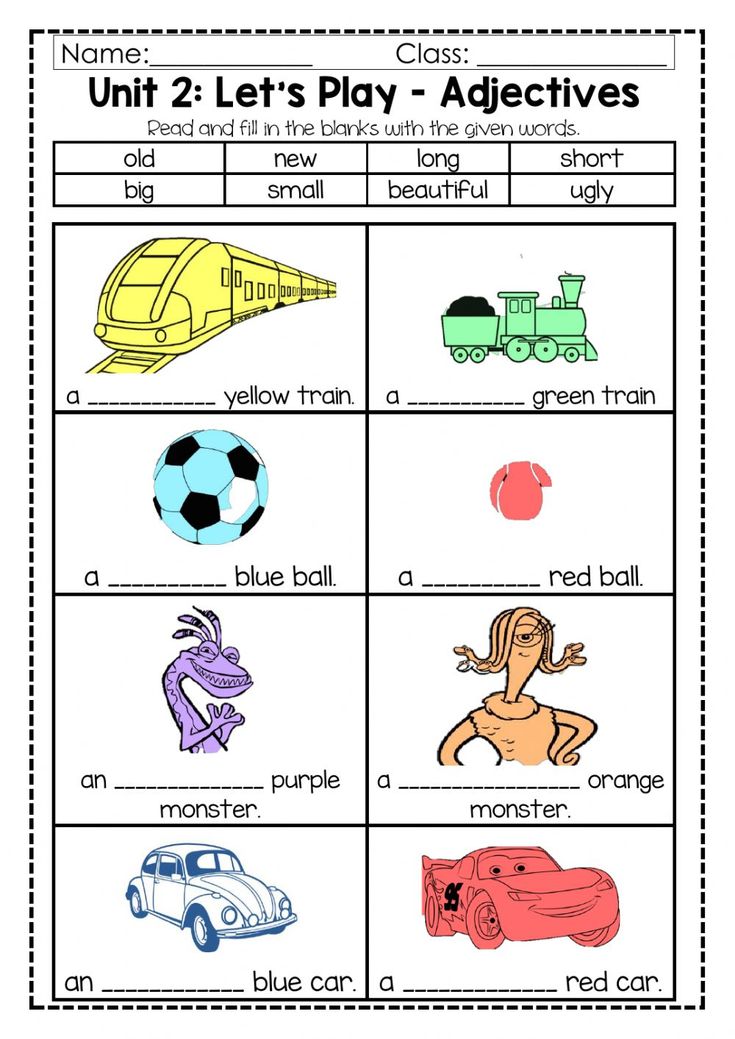
Mastering the Art of Description: The Indispensable Role of Adjective Unit Worksheets
In the intricate tapestry of language, adjectives serve as the vibrant threads that add color, depth, and precision to our communication. They transform mundane statements into vivid descriptions, allowing us to paint pictures with words and convey nuances that would otherwise be lost. From the simplest descriptions like "a red ball" to the complex imagery found in poetry, adjectives are fundamental to effective expression. For students embarking on their linguistic journey, mastering this crucial part of speech is paramount. This is where well-designed adjective unit worksheets become an indispensable cornerstone of language education, providing a structured, comprehensive, and engaging pathway to understanding and applying these powerful descriptive tools.
The Foundational Importance of Adjectives in Language Acquisition
Before delving into the specifics of worksheets, it’s vital to appreciate why adjectives hold such a significant place in language learning. Adjectives are not merely decorative; they are functional and essential for clarity and precision. They allow us to:
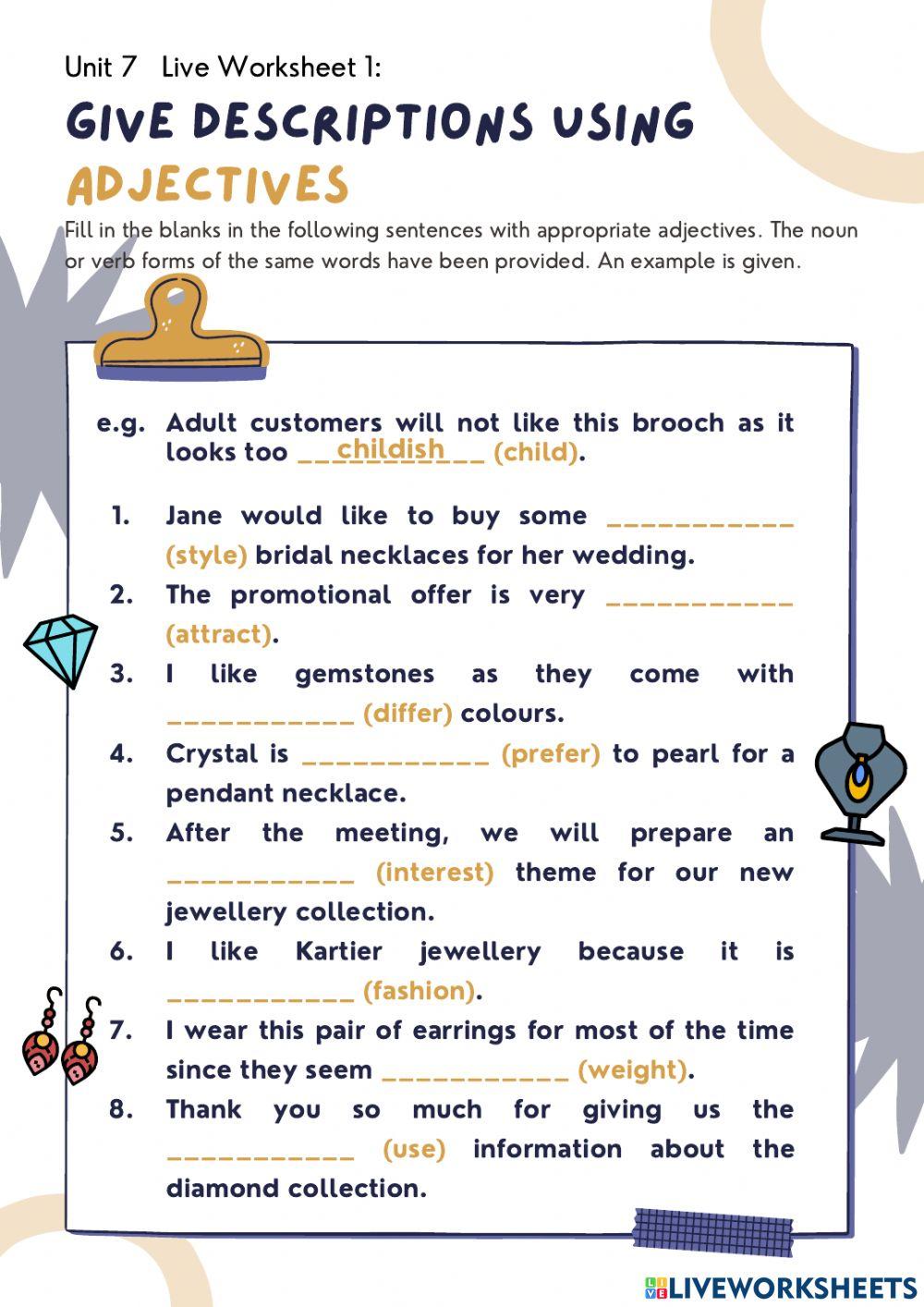
- Enhance Clarity and Specificity: Instead of "a house," we can say "a charming, old Victorian house," instantly conjuring a more precise image.
- Evoke Emotion and Sensory Experience: "A warm, comforting blanket" feels very different from just "a blanket." Adjectives appeal to our senses and emotions.
- Improve Reading Comprehension: Understanding the adjectives used by authors helps readers grasp the full context, tone, and imagery of a text.
- Refine Writing Skills: A strong command of adjectives elevates writing from ordinary to exceptional, making it more engaging, persuasive, and articulate.
- Expand Vocabulary: Learning new adjectives naturally broadens a student’s lexical repertoire, empowering them with more ways to express themselves.

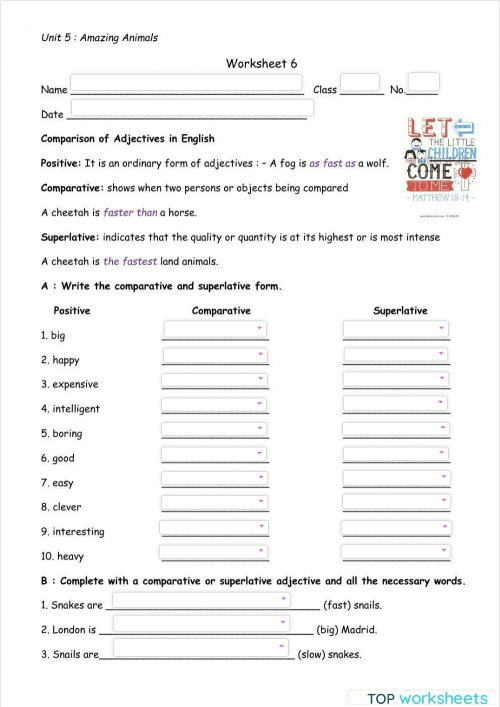
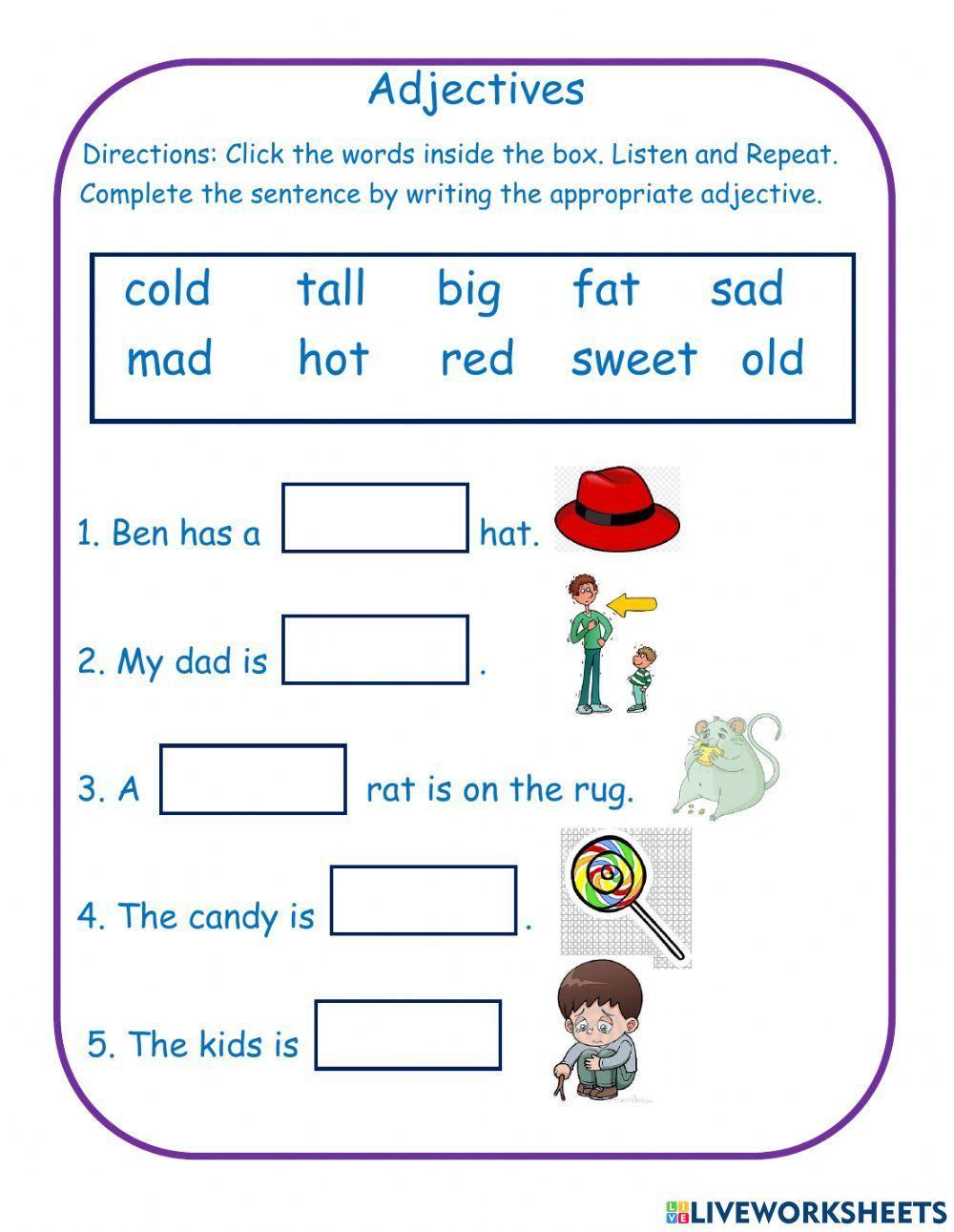
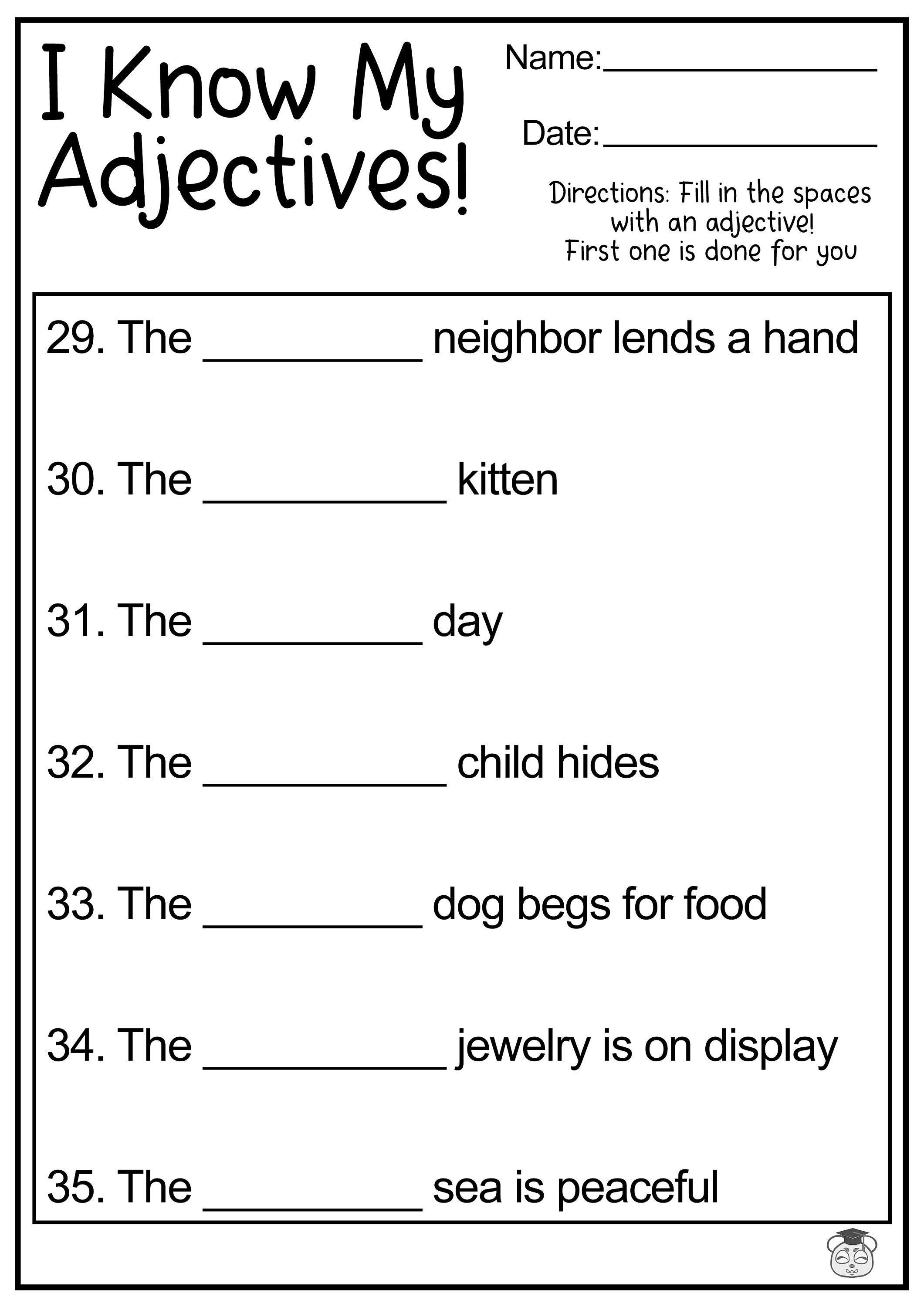
Without a solid grasp of adjectives, students’ writing remains simplistic, their reading comprehension limited, and their overall communication less effective. This underscores the need for dedicated, systematic instruction, which adjective unit worksheets are uniquely positioned to deliver.
What Constitutes an Effective Adjective Unit Worksheet?
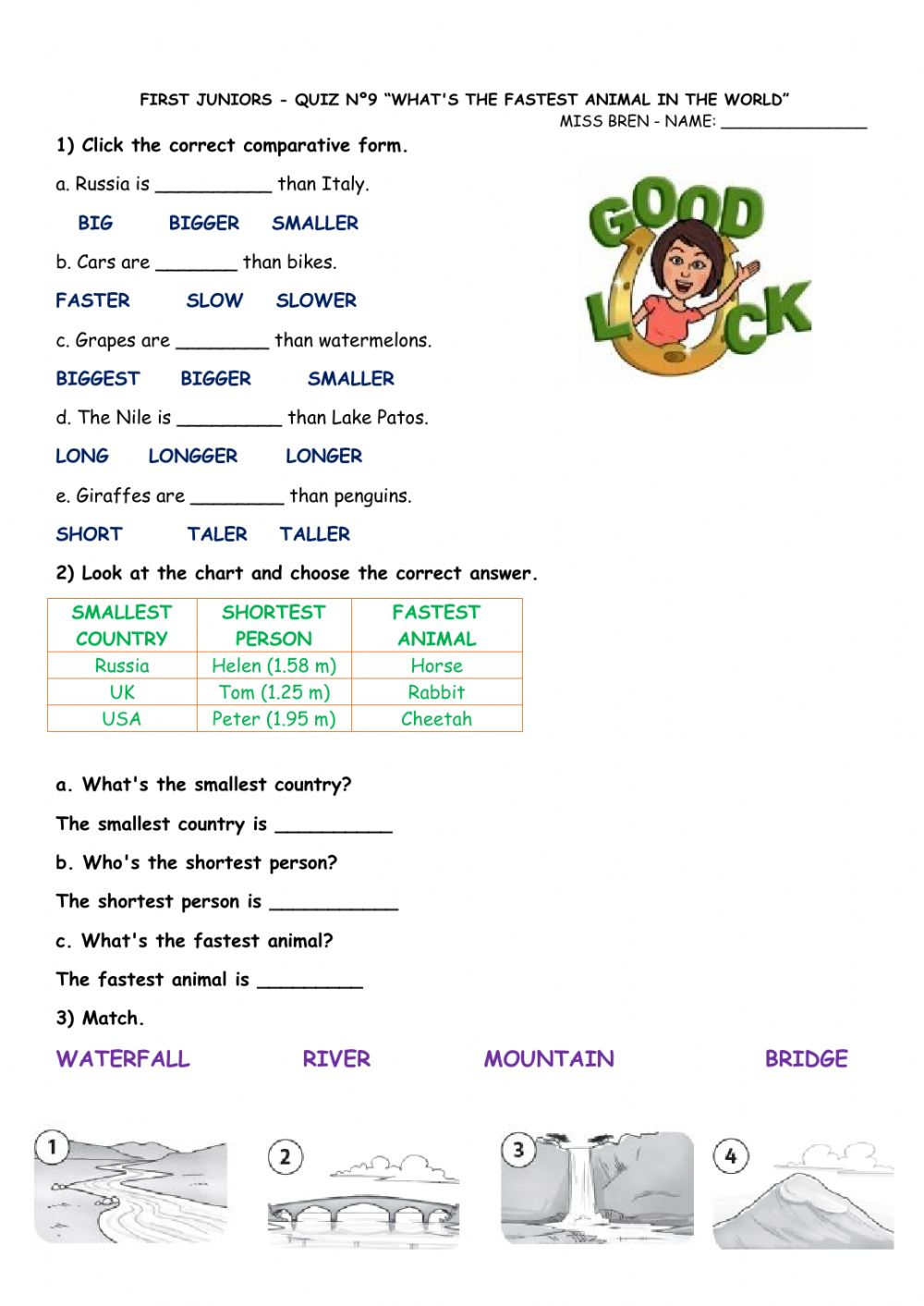
A truly effective adjective unit worksheet is more than just a collection of random exercises. It is a carefully curated series of activities designed to build understanding progressively, moving from basic identification to complex application. A comprehensive unit typically includes:
- Clear Learning Objectives: Each section or worksheet within the unit should have explicit goals, such as "Students will be able to identify adjectives in a sentence" or "Students will be able to correctly use comparative adjectives."
- Varied Exercise Types: To cater to different learning styles and prevent monotony, a good unit incorporates a range of activities.
- Scaffolding and Progression: The unit should start with foundational concepts and gradually introduce more complex rules and applications.
- Real-World Context: Exercises should ideally connect to authentic language use, making the learning relevant and transferable.
- Answer Keys: For self-assessment and teacher efficiency, clear answer keys are invaluable.


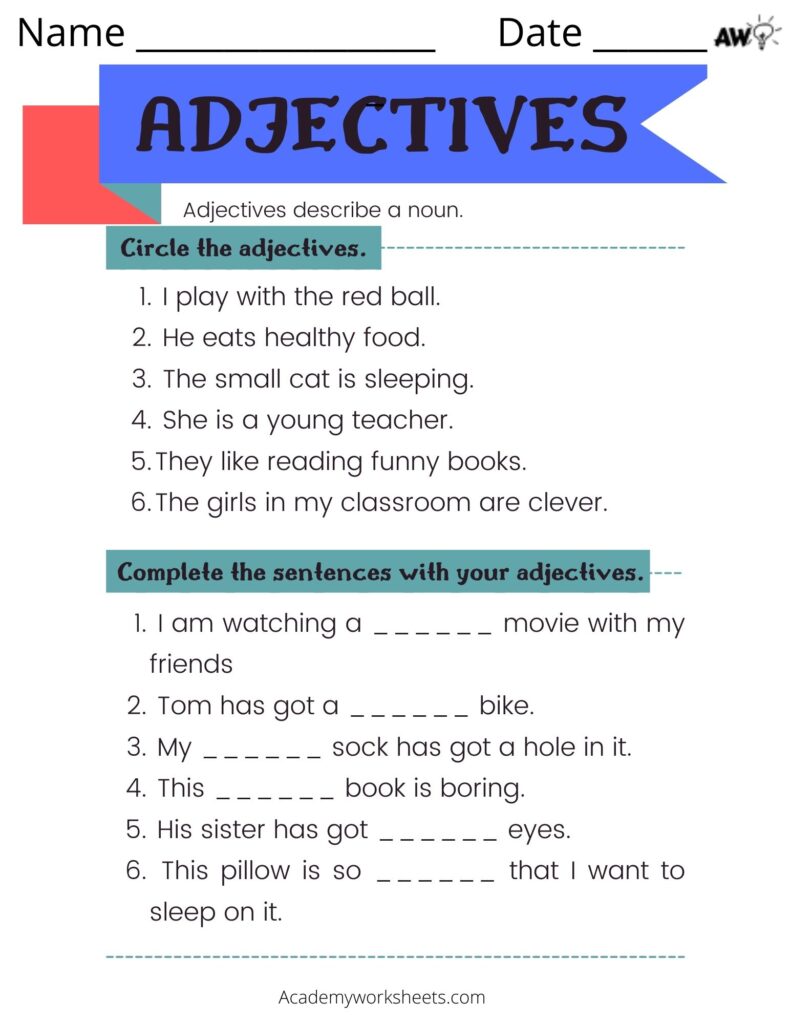
The "unit" aspect is key here. It implies a cohesive, step-by-step approach to mastering adjectives, ensuring that students build a strong foundation before moving on to more advanced concepts.
Core Components and Types of Exercises within Adjective Unit Worksheets
The beauty of adjective unit worksheets lies in their versatility and the breadth of grammatical concepts they can cover. Here’s a breakdown of common and essential exercise types:
-
Adjective Identification:
- Underline the Adjective: Students read sentences and underline the words that describe nouns or pronouns.
- Circle the Noun an Adjective Describes: This helps students understand the direct relationship between an adjective and the word it modifies.
- Fill-in-the-Blanks with Adjectives: Providing a word bank of adjectives and sentences with blanks encourages students to choose the most appropriate descriptor.
-
Adjective Usage and Placement:
- Sentence Construction: Students are given a noun and an adjective and asked to create a sentence using both.
- Rewriting Sentences: Students take a simple sentence and add adjectives to make it more descriptive.
- Adjective Position: Exercises focusing on where adjectives typically appear (before the noun, after linking verbs).
-
Degrees of Comparison (Comparative and Superlative Adjectives):
- Completing Tables: Students fill in the comparative and superlative forms of given adjectives (e.g., big, bigger, biggest; beautiful, more beautiful, most beautiful).
- Sentence Completion: Using "than" for comparative and "the" for superlative sentences.
- Irregular Forms: Dedicated practice for irregular adjectives like good/better/best, bad/worse/worst.
-
Order of Adjectives:
- This is a more advanced but crucial concept. English has a preferred order for multiple adjectives modifying a single noun (Opinion, Size, Age, Shape, Color, Origin, Material, Purpose – OSASCOMP).
- Rearranging Scrambled Adjectives: Students are given a list of adjectives and a noun, and they must arrange the adjectives in the correct order.
- Sentence Correction: Identifying and fixing sentences where adjectives are out of order.
-
Descriptive Writing with Adjectives:
- "Show, Don’t Tell" Exercises: Students are given a simple statement (e.g., "The dog was happy") and asked to use adjectives to show the happiness without explicitly stating it (e.g., "The dog wagged its fluffy tail, its bright eyes sparkling with joy").
- Character/Setting Description: Prompts that encourage students to use a range of adjectives to describe a person, place, or object.
- Sensory Adjectives: Exercises specifically focusing on adjectives related to sight, sound, smell, taste, and touch.
-
Distinguishing Adjectives from Adverbs:
- This is a common point of confusion. Worksheets can present sentences where students must identify whether a word is modifying a noun/pronoun (adjective) or a verb/adjective/adverb (adverb).
- "Good vs. Well" and "Bad vs. Badly" practice.
-
Error Correction:
- Students identify and correct common errors in adjective usage, such as double comparatives ("more bigger") or incorrect superlative forms.
Pedagogical Benefits of Implementing Adjective Unit Worksheets
The strategic integration of adjective unit worksheets into a curriculum offers a multitude of benefits for both students and educators:
- Structured Learning Pathway: Worksheets provide a clear, step-by-step approach to learning, breaking down complex grammatical concepts into manageable chunks. This systematic progression helps prevent overwhelm and builds confidence.
- Reinforcement and Practice: Repetition is key to mastery. Worksheets offer ample opportunities for students to practice newly acquired knowledge, solidifying their understanding and making it stick.
- Assessment Tools: Teachers can use worksheets for both formative assessment (to gauge understanding during a lesson) and summative assessment (to evaluate overall mastery of the unit). They provide tangible evidence of student learning.
- Differentiation: Well-designed units often include varied difficulty levels or extension activities, allowing teachers to differentiate instruction to meet the needs of diverse learners, from struggling students to advanced ones.
- Engagement (When Done Right): While grammar can sometimes feel dry, creative worksheets that incorporate puzzles, games, real-world scenarios, or imaginative prompts can make learning adjectives enjoyable and memorable.
- Independent Learning: Worksheets empower students to work independently, fostering self-reliance and allowing them to progress at their own pace. They can also be used effectively for homework or review.
- Skill Transfer: By practicing adjectives in different contexts, students are better able to transfer their grammatical knowledge into their own writing and speaking, making their communication more sophisticated and precise.
Best Practices for Maximizing the Impact of Adjective Unit Worksheets
While adjective unit worksheets are powerful tools, their effectiveness hinges on how they are utilized. Here are some best practices for educators and parents:
- Introduce Concepts Clearly: Before handing out a worksheet, explicitly teach the grammar concept. Use examples, visuals, and interactive discussions.
- Model and Guide: Work through the first few problems together as a class. Demonstrate thinking processes and common pitfalls.
- Provide Context: Connect adjective usage to real-world communication. Discuss how authors use adjectives in books they are reading, or how effective speakers use them to persuade.
- Encourage Creativity: Beyond basic identification, challenge students to use adjectives in their own creative writing. "Write a paragraph describing your favorite food using at least five different adjectives."
- Integrate with Other Activities: Don’t let worksheets be isolated. Pair them with reading (identifying adjectives in texts), speaking (describing objects or people), and writing assignments.
- Offer Constructive Feedback: Go beyond simply marking answers right or wrong. Provide specific feedback on why an answer was incorrect and how to improve.
- Vary the Format: Mix traditional paper-based worksheets with digital, interactive exercises, or even hands-on activities that involve physical objects and descriptions.
- Review and Recycle: Revisit concepts from previous worksheets periodically to ensure long-term retention.
Conclusion
Adjectives are the descriptive heart of the English language, enabling us to articulate the world around us with unparalleled clarity and vividness. For students to truly master this essential part of speech, a systematic, engaging, and comprehensive approach is necessary. Adjective unit worksheets stand out as an exceptionally effective tool in this endeavor. By providing structured practice, varied exercises, and a progressive learning pathway, these units empower students to not only identify and use adjectives correctly but also to appreciate their profound impact on meaning and expression. Investing in well-crafted adjective unit worksheets is investing in the linguistic fluency, communicative precision, and descriptive prowess of future generations, equipping them with the tools to paint their own vibrant pictures with words.
